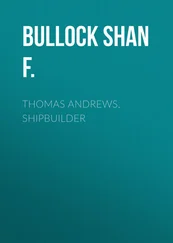~~~
In the office later that day, Casey turned from the tonnage projections she was working on. “Have I picked up the wrong formula for figuring the number of lifeboats?” she asked Tom. “It seems wrong.”
He looked over her shoulder, checking what she had written. “Looks correct to me. What don’t you understand about it?”
“Why it’s used,” she said, looking at him curiously. “I suppose the tonnage relates to how much room there is for lifeboats, and to the number of people the ship can carry. But why not just provide enough seats for each person the ship can carry? The other way seems so inefficient. Not to mention inaccurate.”
Tom smiled thoughtfully, as he turned and leaned against the table, arms crossed. “Now that’s something that needs to change,” he said. “Knowledge has been increasing so quickly over the last twenty years or so, that rule-making bodies are struggling to keep up. It’s also true that a governing board is typically conservative and slow-moving.” He gave her a rueful look. “We’ve been lobbying for more lifeboats for a long time. For the most part, the board doesn’t see the need to change the rule, and until the rule is changed, the people who control the purse strings aren’t going to spend the money.”
She shook her head. “It always comes down to money, doesn’t it?”
He looked despondent. “Aye, Casey. It always does. But we keep hounding them. Eventually, they’ll come around.”
“Not before a lot of people die,” she murmured, staring at her figures.
“Oh, not necessarily,” he protested. “There are other ways of effecting rescues, you know. All the ships have the wireless now, and can call for help, if it’s needed. And the ships themselves are better built and more stable, more able to withstand the storms and other dangers. ‘Tis true that no ship is unsinkable, but we do everything we can to keep them afloat for as long as possible, if damaged.” He held out a hand. “No one wants people to die.”
Casey stamped down on her nervousness. This was the first real opportunity she’d had to even begin to warn him and she didn’t want to blow it. “I was reading about the Great Eastern,” she began, and stopped when he raised both eyebrows in astonishment.
“You were?” he asked. “Why?”
She was puzzled. “Why not?”
“I just didn’t realize you were that interested in this, that you’d be reading about it in your spare time.”
She shrugged. “It’s your fault,” she told him, laughing at his expression. “You give me a job here and I find it’s fascinating stuff. So I start reading about ships.”
He seemed amazed. “So what about the Great Eastern?”
“Well, it seems that we don’t use even the technology we have available to build safer ships. The Eastern was built almost fifty years ago, with a complete double hull and watertight bulkheads that rose thirty feet above the water line. When she ran into a rock and had severe damage, she was still able to make it to harbor. Because of the double skin.”
He looked at her for a moment, then held a finger up to indicate she should wait. He went into the drawing room and came back in a couple of minutes with a few rolls of plans. He spread them out on the table. “These are the early drawings for Cedric and Adriatic . I don’t know if you can read these well enough yet, but can you see the double hull? And here,” he pointed to a dotted line that ran the length of the ship, “this is the waterline. The bulkheads extend thirty feet up.” He pointed them out, then looked at her, quite seriously.
“Every ship we design starts out with these. Our first design is always an engineer’s dream—the perfect ship, as near as we can make it. And every time, our first design is denied. It’s like a play. We all know our roles and we all play them.” He sounded surprisingly bitter. “You’ve seen the figures, Casey. Shipping is extremely competitive and the profit margins are almost nonexistent. The ship’s owners want a ship that will make them money. Shareholders want dividends. So we end up building a ship with features that sell: comfort, beauty, service. Safety is important, but it’s one place that owners feel we can cut corners and get away with it. Because we have gotten away with it, Casey.” He rubbed his hand gently over the plans. “There have been no major accidents in all this time. We’ve been lucky.”
She watched him, uncertain. The situation troubled him, and she was about to make it much worse. If he was already doing everything he could, what more could she ask of him? Well, she could ask him to live. That was the bottom line.
“Say there is a major disaster, with a large loss of life,” she said carefully. “Suddenly the public is outraged, and there are inquiries and trials and they begin demanding these features. I’m cynical enough to believe that the money would be there, in that situation. How can we convince them to spend the money before the disaster?”
He looked at her in amazement, shaking his head. “Where did this come from?” he asked. “Of all the issues in shipbuilding you could investigate, why this one?”
She smiled ruefully. “I have a vivid imagination. I watch that ship being built,” she gestured vaguely in the direction of Adriatic , “and I’m simply amazed at it. But I see these figures, and I see what’s not going into the ships. If I, as a customer, wanted to buy a ticket to America, I would know there’s more danger than is being admitted by White Star Line, or even by Harland & Wolff. And I would like to know there’s a seat on a lifeboat, if I need it.”
He nodded, thinking about it. “What would it take to get those features? You already said it: public demand. Across the board, though. If I sat down with Bruce Ismay today, and convinced him to allow those features on his ships, it could bankrupt White Star. If they raised prices to cover the cost, people would go with another line. If they swallow the costs, they’ll never make it up.”
“But they can use the extra safety in marketing, can’t they? If they talk about the features and what they mean, won’t people be willing to pay more?” Casey realized she was thinking of twenty-first century marketing techniques, but she thought it was worth a try.
“Only in a perfect world, lad.” Tom looked apologetic. “Aye, some people will pay more, but most won’t. Most people, if it comes down to it, would rather take the risk, if given the choice. I’m afraid that even the paying public may need your major disaster before they are willing to pay for safety.”
He touched her shoulder. “You can talk to people, write letters, maybe talk to a newspaper and see if they’ll write about it. The only way to begin changing public opinion is by first telling them about the problem.” He looked alarmed. “But I don’t think you, personally, should do anything. Do you have any idea what it would look like, if an employee of Harland & Wolff started a campaign like that? It would look like disgruntlement, like you were trying to harm the company. It could hurt you and us.”
He held up a finger. “I’m serious about that, Casey. Forget I even made the suggestion. Let me keep working on it through inside channels, all right?”
She nodded. “All right.”
He smiled at her. “I promise I’ll work on it more.” He picked up the blueprint and started rolling it up. “I have a meeting. But thanks for your concern. You have very good ideas.”
~~~
She couldn’t shake the worry and remorse that she felt. She told Sam about the conversation, suggesting that perhaps he could approach a newspaper about the issue.
“I’m reluctant to do that, Casey,” he told her. “For one thing, I’m only one step removed from the situation. It would still look like a campaign of some kind. Why don’t you give him a chance to see what he can do? We still have several years before Titanic sails.”
Читать дальше












